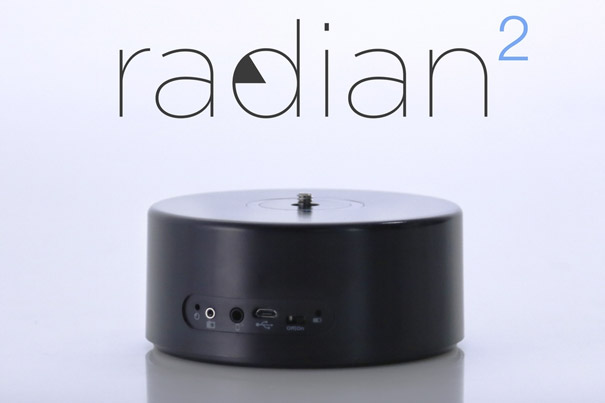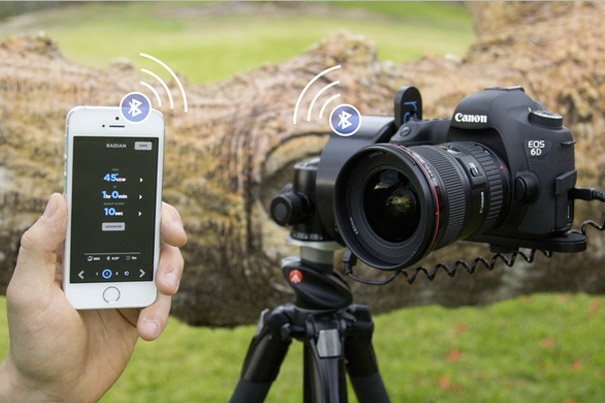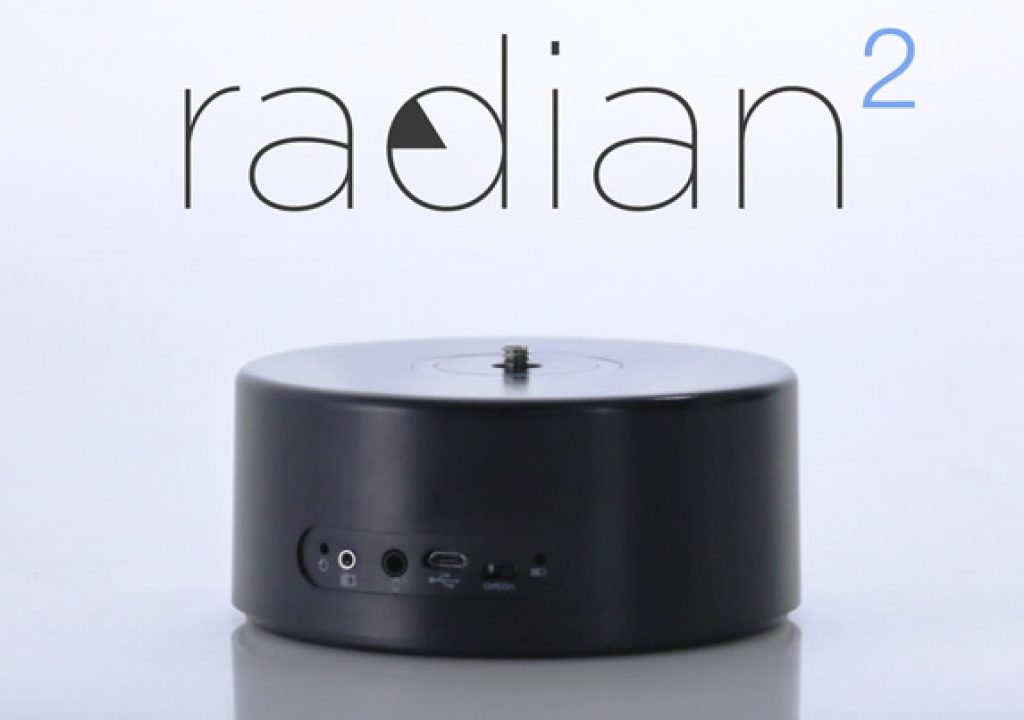
Launched in Kickstarter in 2012, the project for Radian had a simple aim: allow users to take stunning panning and tilting time-lapses. The team behind it had/have a dream: make motion time-lapse accessible to photographers of all levels.
Radian is a device that allows you to take motion time lapses with your DSLR or mirrorless camera, as well as GoPro and even your smartphone. Born out of the frustrations of their creators when trying other devices available in the market, Radian is compact, easy to use, and powerful. Radian has all the advanced features you need, while still keeping things simple so that you can focus on the shot, and actually enjoy what you are capturing.

In 2013 Radian was delivered to 1620 backers in 52 countries, with the remaining 300 Radian sold in one day. Somewhere in 2013 the Michron project appears on Kickstarter. Michron is a device that plugs into your DSLR or mirrorless camera and allows you to take time-lapses. To take a time-lapse, simply program Michron from your phone, connect it to your camera, and sit back while Michron takes the images that will create your time-lapse. Michron is another success: 4500 units are delivered to backers early 2014.
That same year the group started tinkering with new ideas and the feedback from supporters, and that’s how Radian 2 appeared. On Kickstarter until June 5th, 2015, the campaign for the new product aims for a $153,471 goal. With 372 backers now, they’ve reached $86,961, suggesting that the project will be funded before the end of the period still remaining.
Radian 2 has been in tests for nearly a year now, leading to the refinement of features and functionality. The team says that users have been in their mind all the time “so that even with expanded features and creative control, Radian will still feel simple and intuitive. We went back to the drawing board and overhauled the App’s interface, revamped our electronics, and revised our linear slider adaptor to something we were truly excited about.”
Radian has two ways that it can control your camera – through its shutter port, or through its USB port. Through the USB port, the Radian can control the camera settings, such as ISO, aperture, and shutter speed. Through the camera’s shutter port, Radian can command your camera to take photos. At this time the team can only commit to supporting Canon, Nikon, and Sony cameras through USB control, but Radian can control most DSLR cameras through their shutter port. It is advisable to see the full list of cameras that Radian can control over USB and the shutter port (there is a FAQ available at the Kickstarter page) and contact Alpine Labs in case of doubt.
Radian is programmed by your phone, but unlike other iPhone and Android based camera triggers and devices, you don’t need to keep your phone connected. Once you press “Upload,” you are free to disconnect your phone without any worry of interfering with your final time-lapse.
Bluetooth and USB allow users to have complete control over the entire process. With the simplicity of USB, you can set your aperture, shutter speed, and ISO preferences all from your smartphone through Radian. Radian will update your camera to adapt to changes in light for a perfect time lapse every time. The combined power of Bluetooth and USB means you’ll be able to receive image thumbnails on your phone in real time to make sure you are getting the shot you want.
Combining multiple Radians – up to three – also opens to a new level of creativity, as it becomes possible to pan, tilt and slide the camera. The Radian linear adaptor is designed to mount the Radian quickly and securely to your favorite slider, either a commercial unit or a home-built rig. The team at Alipne Labs are building adaptor kits for two of their favorite slider systems (StudioFX and Rhino Slider), but the mounting hardware itself is designed to be easily adapted for DIYers as well.
Find more about the Radian 2 on their Kickstarter campaign page.


